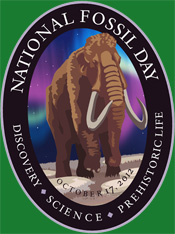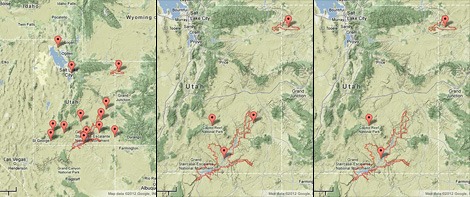
In celebration of National Fossil Day (October 17, 2012), an event first organized by the National Parks Service (NPS) two years ago, we would like to call your attention to a feature on The Paleontology Portal website: “Fossils in US National Parks.” First announced in January of this year (see the January 2012 UCMP News), the module’s interactive map enables one to see all the parks where fossils are present and to find out what fossils (along with their geologic ages) are in any particular park. Improvements in the module’s “searchability” have been made since then and better fossil data continue to be entered into the database.
Searches
You can now browse the more than 230 “fossil-bearing” parks by state, geologic age, fossil type, and park name. Each search is cumulative so you can continually refine your search by selecting new criteria. For example, suppose you want to find out what fossil parks exist in Utah. Select “Utah” in the States browse list and the map will show you Utah and all the national parks that are known to preserve fossils there. You can always click on any park marker to find out what geologic ages and fossils are represented in that park … but what if you want to see only those Utah parks known to have ammonite fossils? Just select “ammonites” from the Fossils browse list and those Utah parks where ammonites exist — or in some cases, potentially exist — will be shown on the map. But you’re interested only in Cretaceous ammonites — no problem! Select “Cretaceous” from the Geologic Ages browse list and the map will show you only those parks with Cretaceous ammonites in Utah.

Data
Vince Santucci and Jason Kenworthy of the NPS Geologic Resources Division and paleo-consultant Justin Tweet deserve the thanks for providing virtually all the geologic age and fossil data for the parks. This resource would not have been possible without their input. As more detailed inventories of each park’s paleontological resources are prepared and new fossils are found, the information will be forwarded to UCMP so that the fossil parks database can be kept current.
So the next time you plan to visit a national park, visit PaleoPortal first and find out what, if any, fossils have been found there!